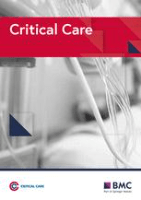
CRITICAL CARE
Scope & Guideline
Bridging knowledge gaps in intensive medicine.
Introduction
Aims and Scopes
- Interdisciplinary Approaches to Critical Care:
The journal emphasizes collaborative practices across various medical and nursing disciplines, highlighting how teamwork enhances patient outcomes in critical care settings. - Patient-Centered Care and Ethical Considerations:
A significant focus is on ethical decision-making and patient autonomy, particularly in high-stakes environments like the ICU where vulnerable patients require careful consideration of their rights and needs. - Innovative Technologies and Practices:
The journal showcases advancements in technology, such as telehealth and point-of-care ultrasonography, which are transforming the delivery of critical care, making it more efficient and effective. - Nursing Education and Professional Development:
There is a strong emphasis on the education and ongoing training of nursing professionals, with articles dedicated to developing competencies, leadership skills, and innovative teaching strategies. - Palliative and End-of-Life Care:
The journal addresses the importance of integrating palliative care principles into critical care, ensuring that patients receive holistic and compassionate care even in the face of severe illness. - Research and Evidence-Based Practice:
Articles often focus on the implementation of research findings into practice, promoting a culture of inquiry and evidence-based decision-making among nursing professionals.
Trending and Emerging
- Telehealth and Virtual Care Innovations:
The rapid integration of telehealth into critical care practice has gained significant attention, especially post-COVID-19, emphasizing the need for remote patient monitoring and virtual consultations. - Mental Health and Wellbeing of Healthcare Providers:
A growing emphasis on the mental health of nurses and healthcare providers is emerging, particularly in the context of the COVID-19 pandemic and its impact on work-related stress and burnout. - Ethics in Critical Care:
There is an increasing focus on ethical dilemmas faced in critical care settings, particularly regarding decision-making in complex cases involving vulnerable populations. - Palliative Care Integration in ICU Settings:
The integration of palliative care into critical care practices is trending, with a focus on improving the quality of life for patients with severe and chronic conditions. - Artificial Intelligence and Technology in Patient Care:
The exploration of artificial intelligence and its applications in electronic health records and patient monitoring systems is gaining traction, highlighting its potential to enhance clinical decision-making.
Declining or Waning
- Traditional Invasive Monitoring Techniques:
There is a noticeable decline in the discussion surrounding traditional invasive monitoring methods, as newer, less invasive technologies gain traction and become the standard in critical care. - General Critical Care Protocols:
The focus on generic critical care protocols appears to be waning in favor of more specialized and tailored approaches, reflecting a shift towards personalized medicine. - Single-Disease Focus Studies:
Research centered solely on single diseases in critical care settings is becoming less common, as there is a growing recognition of the need for comprehensive, multifaceted approaches to patient care. - Basic Nursing Skills Training:
There seems to be a decline in publications addressing basic nursing skills training, with a shift towards more advanced practice and competency-based training initiatives. - Historical Perspectives on Critical Care:
Articles reflecting on historical practices and perspectives in critical care are becoming less frequent, as the journal moves towards contemporary issues and future directions in the field.
Similar Journals
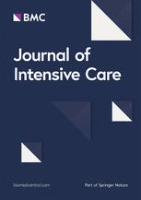
Journal of Intensive Care
Elevating Standards in Intensive Care Research and PracticeThe Journal of Intensive Care, published by BMC, is a leading open access journal dedicated to advancing research and knowledge in the fields of critical care and intensive care medicine. With an impressive 2023 rank of #11 out of 110 in its category and placing in the 90th percentile, this journal offers a vital platform for researchers, clinicians, and healthcare professionals to disseminate innovative findings and best practices. Launched in 2013, the journal has gained significant recognition, achieving a Q1 quartile ranking in critical care, reflecting its commitment to high-quality contributions that address pressing issues in patient management and care. Additionally, as an open access publication, the journal ensures that its content is widely accessible, fostering collaboration and knowledge sharing within the global medical community. For those engaged in intensive care, the Journal of Intensive Care is an essential resource for staying abreast of the latest research trends and clinical advancements.
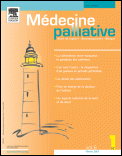
Medecine Palliative
Advancing Palliative Practices for Better Patient Outcomes.Medecine Palliative is a distinguished journal published by Elsevier, dedicated to the vital field of palliative care and pain management. With an ISSN of 1636-6522 and E-ISSN 2213-0098, this international journal has been an essential resource since its inception in 1970, currently covering research from 2004 to 2024. The journal reflects a commitment to enhancing the quality of life for patients facing serious illnesses, addressing critical issues in Anesthesiology and Oncology, while fostering innovative nursing practices in palliative care. While the journal holds a Q3 ranking in Anesthesiology and Pain Medicine and a Q4 in Oncology categories, making it a valuable venue for researchers and practitioners aiming to contribute to the evolving landscape of palliative medicine. Despite its lower rank in some categories, the journal serves as an important platform for insights, clinical findings, and current practices that can significantly impact patient care. Medecine Palliative is accessible to researchers, professionals, and students who are eager to explore the latest advancements and evidence-based approaches in end-of-life care.

Critical Care and Resuscitation
Advancing the frontiers of critical care and emergency medicine.Critical Care and Resuscitation is a premier peer-reviewed journal published by Elsevier, focusing on the dynamic fields of Anesthesiology, Critical Care, and Emergency Medicine. Established in Australia, this journal has been a significant contributor to scholarly research since its inception in 1999, maintaining a strong reputation with a commendable impact factor, evidenced by its Q1 quartile rankings across its relevant categories for 2023. The journal's commitment to disseminating high-quality research is reflected in its elite standings: it ranks #7 out of 109 in Emergency Medicine, #12 out of 136 in Anesthesiology, and #16 out of 110 in Critical Care. Aimed at researchers, clinicians, and healthcare professionals, Critical Care and Resuscitation provides a vital platform for the latest advancements in patient care and clinical strategies, making it an essential resource for those eager to stay at the forefront of these critical disciplines. Although lacking Open Access options, its rigorous peer-review process ensures the publication of valuable insights that shape current practices and influence future developments in healthcare.
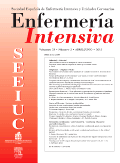
Enfermeria Intensiva
Bridging Research and Practice in Intensive NursingEnfermeria Intensiva, published by Elsevier Science Inc, is a highly regarded journal in the fields of Advanced and Specialized Nursing as well as Critical Care and Intensive Care Medicine. With an impressive track record spanning from 1994 to 2024, this journal serves as a vital resource for researchers, healthcare professionals, and students dedicated to enhancing the quality of patient care in critical settings. It holds a coveted Q2 ranking in multiple nursing categories as of 2023, reflecting its influence and contribution to the ongoing discourse in nursing practices. Although currently not an open access journal, it continues to provide intricate insights into both fundamental skills and specialized techniques essential in intensive nursing care. By bridging research and practical application, Enfermeria Intensiva plays a pivotal role in advancing knowledge and improving outcomes in critical care environments.
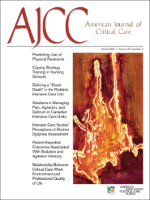
AMERICAN JOURNAL OF CRITICAL CARE
Transforming patient outcomes through dedicated scholarship.Welcome to the American Journal of Critical Care, a premier publication dedicated to advancing the field of critical care nursing and enriching the understanding of critical care practices. Established in 1992 and published by the American Association of Critical Care Nurses, this journal serves as a vital resource for researchers, practitioners, and students alike, providing cutting-edge research, insightful reviews, and evidence-based practices that shape modern critical care. With an impressive impact factor and distinguished rankings—ranking in Q1 for Critical Care Nursing and Q2 for miscellaneous Medicine in 2023—this journal underscores its significance in the healthcare landscape. Although it does not currently offer Open Access, the American Journal of Critical Care remains committed to disseminating high-quality knowledge that drives innovation and improves patient care in critical settings. Join us as we explore the latest advancements and pivotal studies that influence patient outcomes and shape the future of nursing practice.
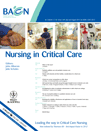
Nursing in Critical Care
Elevating standards in critical care through cutting-edge research.Nursing in Critical Care is a premier journal dedicated to the advancement of knowledge and practice in the field of critical care nursing. Published by WILEY, this esteemed journal has established itself as a leader in the domain, holding a prestigious Q1 ranking in Critical Care Nursing as of 2023, and ranking as the 2nd out of 27 in its category according to Scopus, with an impressive 94th percentile. Since its inception in 1996, it has been an essential platform for disseminating cutting-edge research, evidence-based practices, and critical insights that directly impact patient outcomes in high-stakes environments. While not an Open Access journal, it offers accessible options for institutions and individuals dedicated to the continuous evolution of nursing practices in critical care settings. The journal promises to remain at the forefront of the discipline, providing invaluable resources for researchers, practitioners, and students alike who aspire to enhance their expertise and improve the standards of care within intensive health scenarios.
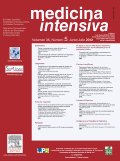
Medicina Intensiva
Advancing Critical Care Knowledge for Tomorrow's ChallengesMedicina Intensiva is a distinguished journal published by Elsevier España SLU, specializing in the critical care and intensive medicine fields. Since its inception in 1988, this peer-reviewed journal has established itself as a vital resource for healthcare professionals and researchers dedicated to advancing the knowledge and treatment of critically ill patients. With an impact factor ranked in the Q2 category for Critical Care and Intensive Care Medicine, the journal sits at the 50th percentile among its peers, reflecting its reputable standing in the academic community. The scope of the journal encompasses a wide array of topics, from clinical practices to innovative research findings, contributing significantly to the enhancement of patient care in intensive settings. Although the journal does not currently offer Open Access options, its valuable content is accessible to subscribers and institutions, reinforcing its role as an important conduit for disseminating high-quality research. As we continue into 2024, *Medicina Intensiva* remains committed to supporting the medical community through insightful articles and timely reviews that shape the future of intensive care.

Critical Care Nursing Quarterly
Elevating Critical Care Through Insightful ResearchCritical Care Nursing Quarterly is a distinguished journal published by Lippincott Williams & Wilkins, catering to the vital field of critical care nursing. With an ISSN of 0887-9303 and an E-ISSN of 1550-5111, this journal has been contributing to the advancement of nursing practices since its inception in 1987. Over the years, it has gained recognition, earning a Q3 ranking in Critical Care Nursing for 2023 with a Scopus rank of #9 out of 27, placing it in the 68th percentile of its category. As a non-open access journal, it offers a curated selection of high-quality articles designed to disseminate critical findings, innovative practices, and essential reviews relating to nursing in critical care settings. The journal's ongoing commitment to improving patient care through research and education highlights its pivotal role in shaping the future of critical care nursing. For researchers, professionals, and students alike, Critical Care Nursing Quarterly serves as an indispensable resource in a field that impacts lives daily.
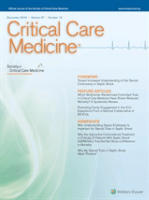
CRITICAL CARE MEDICINE
Shaping the Future of Critical Care PracticesCRITICAL CARE MEDICINE is a premier journal dedicated to the advancement of knowledge and practice in the field of critical care and intensive care medicine. Published by Lippincott Williams & Wilkins, this distinguished journal has been at the forefront of medical research since its inception in 1973, and it continues to offer insights into the latest developments and innovations in critical care. With a remarkable ranking of #5 out of 110 in Scopus' Critical Care category and a 95th percentile rating, CRITICAL CARE MEDICINE is a leading source for high-impact research, reviews, and clinical studies. The journal is recognized as a Q1 publication, underscoring its authoritative presence within the academic community. Researchers and clinicians are encouraged to engage with cutting-edge findings that aim to improve patient care and outcomes. Although the journal is not open access, it remains an essential resource for professionals seeking to enhance their understanding and application of critical care practices.

INTENSIVE CARE MEDICINE
Empowering Excellence in Intensive Care PracticesINTENSIVE CARE MEDICINE is a premier academic journal in the field of critical care and intensive care medicine, published by SPRINGER. With an impressive HIndex and a remarkable impact factor, this journal consistently ranks in the top quartile of its category, achieving Q1 status for 2023. Spanning over four decades since its inception in 1977, it serves as a crucial platform for disseminating groundbreaking research and clinical advancements that shape the future of intensive care. Notably, it holds a distinguished position in the Scopus rankings, placed #1 out of 110 in its field, reflecting its importance and influence among researchers and clinicians alike. Although it is not an open-access journal, it offers various subscription options, ensuring wide accessibility to its high-quality content. The journal is dedicated to enhancing knowledge and practices within the critical care community, making it an indispensable resource for practitioners, researchers, and students pursuing excellence in intensive care medicine.